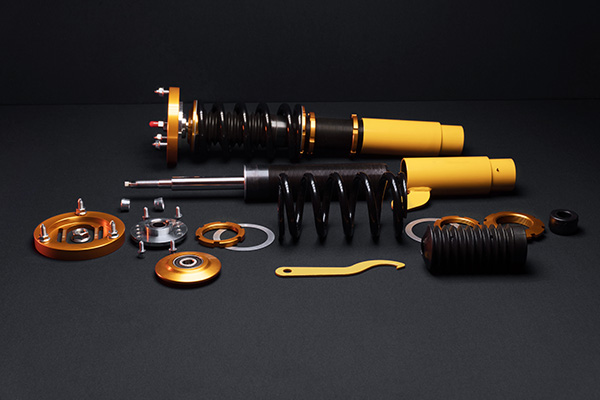
Your vehicle’s suspension system does more than just keep the ride comfortable. It’s critical for control, stability, and safety. Every bump in the road, every sharp turn, and every stop relies on a network of parts working together to keep your tires planted and your steering responsive. While most drivers know their car has “suspension,” few realize just how many components are involved.
Below are five key parts of the suspension system, what they do, and why they matter to your vehicle’s performance and safety.
1. Springs
Springs are the foundation of your suspension. They support the weight of your vehicle and absorb shocks from the road. When you drive over bumps, dips, or potholes, the springs compress and rebound to keep the car level and minimize the impact.
Most modern vehicles use coil springs, but some trucks and older models may have leaf springs or torsion bars. If your springs become worn or damaged, your ride will feel harsh, and your vehicle may sag or lean to one side.
2. Shock Absorbers
Shocks work alongside your springs to control motion. When springs compress and rebound, they create energy that needs to be managed. Shock absorbers dampen that movement, preventing your car from bouncing after hitting a bump.
Worn shocks often lead to excessive bouncing, poor handling, and longer stopping distances. They can also cause uneven tire wear because your tires may not stay firmly planted on the road.
3. Struts
Struts are similar to shock absorbers, but they also serve as structural parts of the suspension. Many cars use a MacPherson strut design, where the strut supports the coil spring and helps connect the wheel to the vehicle body. This design saves space and weight, making it popular in front-wheel-drive vehicles.
If your car uses struts instead of separate shocks and springs, replacing them often requires a bit more labor. But the signs of wear, like clunking noises, a shaky ride, or difficulty steering, are often easy to spot.
4. Control Arms
Control arms serve as the link between the suspension and the vehicle’s frame. They allow the wheels to move up and down while keeping them aligned with the rest of the car. Control arms are connected with ball joints and bushings, both of which are subject to wear.
When bushings or ball joints become loose, you might hear clunking or feel vibration through the steering wheel. You could also notice alignment issues, uneven tire wear, or a vague steering response.
5. Sway Bar (Stabilizer Bar)
The sway bar helps reduce body roll during turns. It connects opposite wheels through short links and twists as the vehicle corners. This twisting motion resists the car’s tendency to lean, keeping the vehicle more stable and balanced.
If the sway bar links or bushings wear out, you may feel more body roll when cornering or hear knocking noises coming from underneath the vehicle when turning or going over bumps.
Why Suspension Health Is So Important
Your suspension system affects every part of the driving experience. From how your car handles in emergencies to how evenly your tires wear, these components play a critical role in keeping you safe and comfortable. Ignoring early signs of wear can lead to expensive repairs, especially if other systems like steering or braking are affected.
Poor suspension doesn’t just make your ride bumpy. It can reduce traction, increase stopping distances, and cause premature tire wear, all of which compromise your control on the road.
Let Gil's Garage Inc Keep Your Suspension in Top Shape
If your ride feels rough, your steering seems loose, or you’re hearing strange noises from underneath the car, it might be time for a suspension check. At Gil’s Garage Inc in Burnt Hills, NY, our team inspects, diagnoses, and repairs all types of suspension components to restore a smooth, stable ride.
Book your appointment today and let our experts keep your car driving at its best.